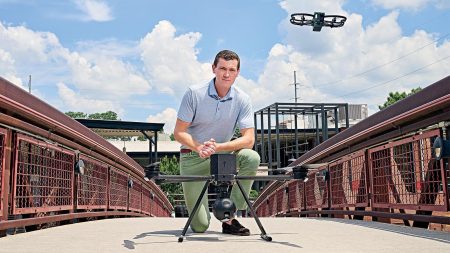NASA will be launching three scientific rockets into the moon’s shadow during a partial solar eclipse on April 8. The event will result in a sudden drop in sunlight and temperature, affecting Earth’s upper atmosphere. Named Atmospheric Perturbations Around The Eclipse Path (APEP), the project will investigate these effects. The rockets will be launched from Wallops Island, Virginia, where 81% of the sun will be blocked by the moon.
This upcoming eclipse is set to be a total solar eclipse for a path through Mexico, 15 U.S. states, and Canada, and a partial solar eclipse for the entire Americas. The rockets will not launch into totality, but will take measurements of the Earth’s atmosphere during the event. This is not the first time such measurements have been taken during an eclipse. In a previous experiment on October 14, three rockets were launched from New Mexico into the moon’s shadow during a partial solar eclipse.
During the October experiment, the rockets reached altitudes of 216-219 miles and successfully collected data which will be used for the upcoming APEP experiment. The APEP project aims to investigate perturbations in the Earth’s atmosphere during an eclipse, with small instruments measuring changes in electric and magnetic fields, density, and temperature. The rockets will gather data in the ionosphere, an electrified region that affects radio signals and satellite communications.
Aroh Barjatya, a professor at Embry-Riddle Aeronautical University and director of the Space and Atmospheric Instrumentation Lab, explained that each rocket will eject four secondary instruments to measure the data points. This will provide results similar to launching fifteen rockets, but with only three launches. The project aims to understand the ionosphere better and develop models to predict disturbances in communication systems.
Overall, the APEP experiment during the upcoming solar eclipse aims to study the effects of the sudden drop in sunlight and temperature on Earth’s upper atmosphere. By launching rockets into the moon’s shadow, NASA will collect valuable data on perturbations in the Earth’s atmosphere during the event. This research will help improve our understanding of the ionosphere and its impact on communication systems, ensuring smooth operations in our communication-dependent world.













